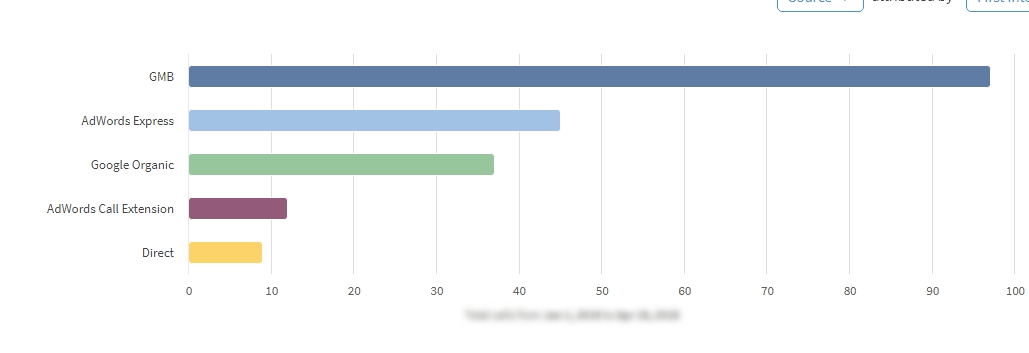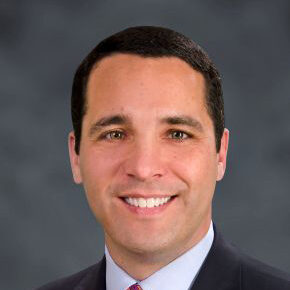If you want to track the performance of your marketing and advertising campaigns, you should track phone calls to your firm by source. This doesn't mean asking potential clients, "How did you find us," during an intake. While that still may be a useful practice, it simply doesn't provide reliable, granular data on how potential clients are finding you.
Here are some things to consider in implementing a system that tracks phone calls to your firm by source.
To me, the best option for tracking calls from your firm's website is something like the following implementation:
Ideally, you want to drive attention to your primary call-to-action. For example, maybe you offer "Free Consultations." This offer should appear prominently at the top of every page. The tracking number should be generated dynamically. Put simply, this will help you understand the caller's source (i.e. where they came from) and conversion page (where they were on your site when they called). Most quality call tracking services offer dynamic number insertion. At the risk of turning this post into an ad for CallRail, for many of you, it will be the best option for this type of implementation.
If you've been following the local SEO space, you're undoubtedly familiar with the concept of NAP consistency. For the uninitiated, this means that your firm's Name, Address, and local Phone (NAP) information are consistent across the web. This plays "some role" in how search engines will show your firm in search results. It's also important for people, you don't want folks calling the wrong number or traveling to the wrong address.
In my experience, it's sufficient to include NAP information in the footer of every page of your website. I also recommend that you include JSON-LD for "Legal Service."
If you're paying attention, you probably recognize that this implementation presents at least some risk relating to search engines getting confused by the primary tracking numbers, as well as, leakage via calls to the footer number. You would be right. However, in my experience, these risks are minimal. Furthermore, on balance, the benefit of the data you get from this implementation far-exceeds the potential risks. Obviously, you need to make a choice that works for your firm.
Finally, you should also consider dedicated tracking numbers in key spots on your site. For example, we've been testing using dedicated tracking numbers in certain pages' meta descriptions.

This allows you to see whether your audience is calling your firm from the description in search results. The reason that this becomes important relates to call attribution. Put simply, if people are calling before they click, those inquiries won't be tracked in Google Analytics, AdWords, and Search Console data. This becomes particularly important in tracking Google My Business performance.
Speaking of Google My Business, at the time of writing, I'm suggesting that you use a dedicated call-tracking number in the primary phone number field and your local phone number (ideally ported into call tracking system) in the alternative number field. This will allow you to more reliably track calls placed via your Google My Business listing (i.e. local pack listing).
If you use CallRail and follow the implementation I've suggested, you get pretty charts like this:

Now you can measure calls to your law firm by source! If you connect these calls to clients and fees, and you can measure things like return on marketing investment by channel and return on ad spend by campaign! In other words, you can measure the value of the time and money you spend on client development in, you know, actual dollars.
If you have questions or issues about call tracking, hit us up in the comments.

Over the years, law firm prospects have sent us reports from just about all of our competitors. Unfortunately, even today, some law firm marketing agencies still mislead their clients via "reporting." One particularly egregious example comes in the form of ranking reports. Which prompted this LinkedIn post. To my surprise, I received a lot of […]
John Wanamaker supposedly said "Half the money I spend on advertising is wasted; the trouble is I don't know which half." In an an effort to figure out "what half is working," attribution was born. Coupled with a transition from traditional, offline ads to digital media, attribution became the holy grail for analyzing advertising spends. But […]
I recently asked ChatGPT, "What are some of the top personal injury law firms in Chicago?? Actually, first I ask "who are some of the top personal injury lawyers in Chicago?" ChatGPT couldn't handle that one, so I modified the prompt. ChatGPT listed five very well-known firms downtown. Can you guess the other four? That's […]
If you're like me, you have some degree of AI, ChatGBT, Bard, exhaustion. Now don't get me wrong, this is stuff is remarkable and is changing, well, a lot. But before you hook up the ChatGPT API to your WordPress API and crank out 10,000 pages, here are a few things to think about. Let's […]
If you know me, you know my opinions about links and SEO advice from Google. If you don't, here's the TL;DR: Meh, links! Meaning, all things being equal, links still remain a competitive difference maker for ranking. Take Google's SEO advice with several grains of salt. Google has no economic incentive to help your site […]
The best marketing advice I can give you is to be authentic. Of course, you don't find that very helpful in terms of meeting your growth goals. So, you might decide to game the system. As I'm writing this, one of the more popular ways to gain the system is to pay for engagement. This […]
The following post was written by ChatGPT. ChatGPT, developed by OpenAI, is a state-of-the-art language model that can generate human-like text based on a given prompt or context. This technology has the potential to revolutionize the way that businesses, including law firms, market themselves to potential clients. One way that a law firm could use […]
How long does SEO take? When can I expect to see results? What results should I expect to see? These are all reasonable questions that we field from lawyers every day. And, like many legal answers, the answer is: It depends. Yes, I know that's not the answer you wanted. But it's the most honest […]
And how much time should they spend doing it? I recently had the privilege of chatting with Tyson, Jim, and Conrad for an upcoming episode of The Maximum Lawyer Podcast. If you're not familiar with The Maximum Lawyer community, you should definitely check it out. Jim asked a really great question about who should do […]